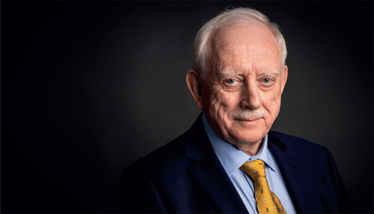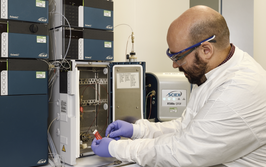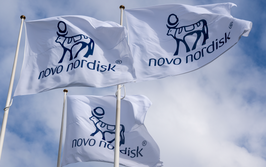The Formulation Fixer
Sitting Down With… Chris Moreton, Partner, FinnBrit Consulting
| 7 min read | Interview

Chris Moreton has spent decades working as a formulation scientist and is a past chair of IPEC-Americas. Here, we find out more about his career and why formulation is such a fascinating area to pursue.
What inspired your interest in science?
My father, who was an organic chemist. He worked for ICI, a company that no longer exists. He worked there all of his working life apart from his military service in WW II. I was always interested in science, but my father’s one regret was that I never really got on with organic chemistry! Originally, I went to undergraduate school to study biochemistry, but that changed for various reasons and I ended up studying pharmacy.
How did you get into industry?
On leaving pharmacy school, I first worked in the hospital service as a trainee pharmacist. I was, quite frankly, unimpressed! I was counting medicines and that was it – and I felt it would drive me mad! I decided to switch to industry. I got a job with a small CMO, which fortunately doesn’t exist anymore, because it was a dump! (This was in the days before GMP was mandatory in the UK; the first GMP inspections in Britain didn’t happen until the summer of 1972.) I stayed on at the company after completing my registration as a pharmacist. After my boss moved to another position, I was promoted to Chief Pharmacist. We received a letter from the Medicines Control Agency (now the MHRA) notifying us of our next GMP inspection, and referencing a previous letter that required the company to do certain things. I took the letter to the general manager, and asked to see the letter from the previous year. None of the action points in that letter had been addressed, but his thinking was that we’d gotten away with it until now, so why change? I handed the letter back to him, walked back to my office, and started looking for another job. That was not the type of company I wanted to work for.
After that, I worked in various companies, including Pfizer, where I stayed for a little more than seven years. After a total of nearly 15 years working in different companies, I went back to university for a master’s in pharmaceutical analysis and a doctorate. Later, I got a job in the excipients industry. I’ve worked in a lot of different places and there are a lot of stories to tell! At one point, I was in charge of quality in an excipient and drug delivery company. I think that was probably a mistake on their part. I knew what was acceptable and what was not acceptable – and, when a line is drawn, I will not step over it. If you step over a line once, you will be asked to do it again and again. My boss was not very happy with me on at least one occasion when I failed a batch!
Why formulation?
I’ve always enjoyed formulation work. In fact, I’m also fascinated by it! I also had a knack for finding solutions, but not necessarily with the tools people wanted me to use. For example, some companies have set management and research tools. On more than one occasion, I found a solution to the problem that using the tool did not achieve!
In some cases, the tools worked well for synthetic chemistry, but not so well for pharmaceutics. In the early days of my career, there was also a lot we didn’t know about formulation. There is still a lot we don’t know. For example, two of the most commonly used excipients are magnesium stearate and microcrystalline cellulose and we still don’t know nearly enough about how and why they work – despite the fact that they have been used for decades.
Are drug development tools, such as models, improving?
For pharmacokinetic/or physiologically based pharmacokinetic models, we have made some progress, but have we made enough? No – we cannot link a drug structure, put it through PK/PD modeling, and be guaranteed a result. There are gaps we need to fill. This is partly a formulation gap, but we also need to better understand how certain drugs get absorbed. Some drugs get absorbed through the wall of the GI tract very quickly, some are slow, and others only get partway before being kicked back out (efflux). As the molecular weight goes up, drugs are more difficult to formulate. Some drugs have to pass through tight junctions, and require co-administration of something that can temporarily open up the junction. We’re only just starting to properly understand tight junctions. In short, there are a lot of factors with which models can’t always help.
How did you get involved with IPEC-Americas?
In the early 1990s, I was working with an excipient company in Britain. After IPEC Europe was founded, my then boss thought it was important to work with them, and he delegated me as the company representative on an IPEC Europe committee (they only had two committees back then!). I would attend meetings and we would evaluate proposals from the Pharmacopoeias for monograph harmonization. When I transferred to the US, my boss wasn’t really interested in IPEC – he wanted to go out on the road and promote the company’s products – so the job was delegated to me.
Many key people in IPEC are on the regulatory or quality side, but I bring a different perspective because of my experience in formulation. I was the chair of IPEC-Americas from 2003 to 2004. I am very interested in the performance of excipients and I’ve been working with USP on excipient-related expert committees since 2000.
What are the biggest formulation challenges today?
The biggest issue is poor water solubility. Many compounds are just very insoluble and sometimes formulators also need to deal with a high partition coefficient as well.
There is a reason solubility is still an issue after all these years. Back in the 1970s, when I was at Pfizer, we didn’t have many poorly water-soluble compounds in the pipeline because the pharmacological screens we use to evaluate new molecules couldn’t handle them, so they weren’t active in the screens. But today, changes in chemistry, better understanding of drug-receptor interactions, and high-throughput screening for pharmacological activity have taught us that useful molecules are often hydrophobic. When we bolt new groups on to the molecule to interact with a specific receptor site, we add more molecular weight, and often more hydrophobicity, both of which drive solubility down further. It’s estimated that around 70 to 80 percent of new drugs going into development are poorly water soluble.
Figuring out which formulation option is the best for a molecule is a major area of interest for me. There are a lot of approaches available today, such as amorphous dispersions, nanoparticles, solid lipid nanoparticles, liposomes, self-emulsifying systems, self-nano emulsifying systems, and more. Some work with one drug, but not others. But we don’t have necessarily a good idea of why one works better than the other. If we knew more about how these approaches work – and how excipients work – we might be able to perform a molecular analysis of the functional groups and molecular modeling to correlate certain structural parameters of the molecule with potential formulation optimization strategies.
What other trends are you watching?
Protein and peptide delivery is an area that interests me. I don’t work in this field, but the progress has been interesting to watch. There are a handful of protein and peptide drugs that are delivered orally. One interesting example is cyclosporine, which is a cyclic peptide. It has a log P of about four, which is higher than most peptides, and makes it more amenable to oral absorption, although formulation is still key. It’s fascinating. There are always challenges in the formulation field to keep you interested.
I’m also keeping my eye on advanced manufacturing technologies, such as 3D printing. Only one drug using 3D printing has been approved so far (Spritam, which uses an innovative formulation approach to dissolve rapidly). However, some people in the industry are very passionate about the technique’s potential. Some drugs have a very narrow therapeutic index and the dose must be closely tailored to the patient. 3D printing could be a good solution here, but I think the technology still has a long way to go – and new excipients may also be required.
If you could change one thing in the industry, what would it be?
Actually, I’m going to say two things. One, I would very much like the FDA pilot program for novel excipients to succeed and become permanent. IPEC-Americas is very passionate about this program and its importance to the industry. Novel excipients will lead to improved formulations. And two, I would like more pharmaceutical production to be brought home. Some organizations overseas do a good job in manufacturing. Others try to do a good job – but do not always succeed. Some deliberately try to cut as many corners as they can. For example, there have been a lot of quality issues in certain countries – something that was highlighted in presentations at the recent Excipient World Conference in Kissimmee, FL. In some cases, people are too fixated on price, which can lead to quality issues. For the safety of patients, we need to focus more on quality and ensure that standards of good manufacturing practice are not compromised.



















